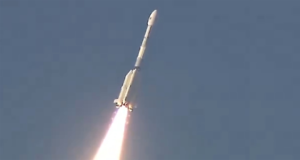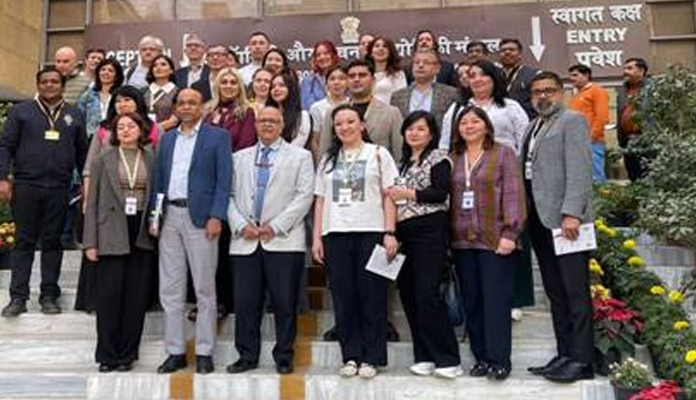 Sriharikota: The Indian Space Research Organisation (ISRO) achieved yet another milestone with the successful launch of the next-generation weather satellite INSAT-3DS.
Sriharikota: The Indian Space Research Organisation (ISRO) achieved yet another milestone with the successful launch of the next-generation weather satellite INSAT-3DS.
The GSLV F14 rocket carrying the satellite lifted off from the second launch pad at the Satish Dhawan Space Centre in Sriharikota at precisely 5.35 pm on Saturday.
The launch proceeded smoothly, with the automatic launch sequence initiated based on confirmation from all control centers.
Approximately 20 minutes after liftoff, the INSAT 3DS was injected into its designated path. All three stages of the launch vehicle, including the cryogenic stage, performed as expected.
Witnessed by thousands of spectators at the visitor’s gallery and scientists at the control center, the 51-meter-tall rocket soared into the sky with a majestic roar.
Somanath, Chairman of ISRO, confirmed the success of the mission, stating that the solar panels of INSAT 3DS had been deployed.
In a statement after the launch, Somanath praised the collaborative efforts of all departments of the Ministry of Earth Sciences, highlighting INSAT 3DS as a next-generation satellite. Mission Director Tomy Joseph expressed his satisfaction with the GSLV’s performance, noting the rocket’s increased payload capacity for INSAT 3DS.
Looking ahead, Joseph mentioned ISRO’s anticipation of the launch of NASAR by NASA.
Satellite Director Imtiaz Ahmed emphasized the importance of ISRO’s future plans to build larger spacecraft, indicating the agency’s developmental trajectory. He underscored the current payload systems’ capabilities in weather prediction for both land and sea, precise forecasting, disaster data collection, and dissemination.
Control centers in Brunei and Port Blair are currently tracking INSAT 3DS.
A. Rajarajan, Director of the Satish Dhawan Space Centre, lauded the successful launch, noting it as the heaviest satellite launch to date, progressing smoothly through all stages.
With this launch, ISRO continues to enhance its space exploration capabilities, paving the way for advanced weather forecasting and disaster management services.




